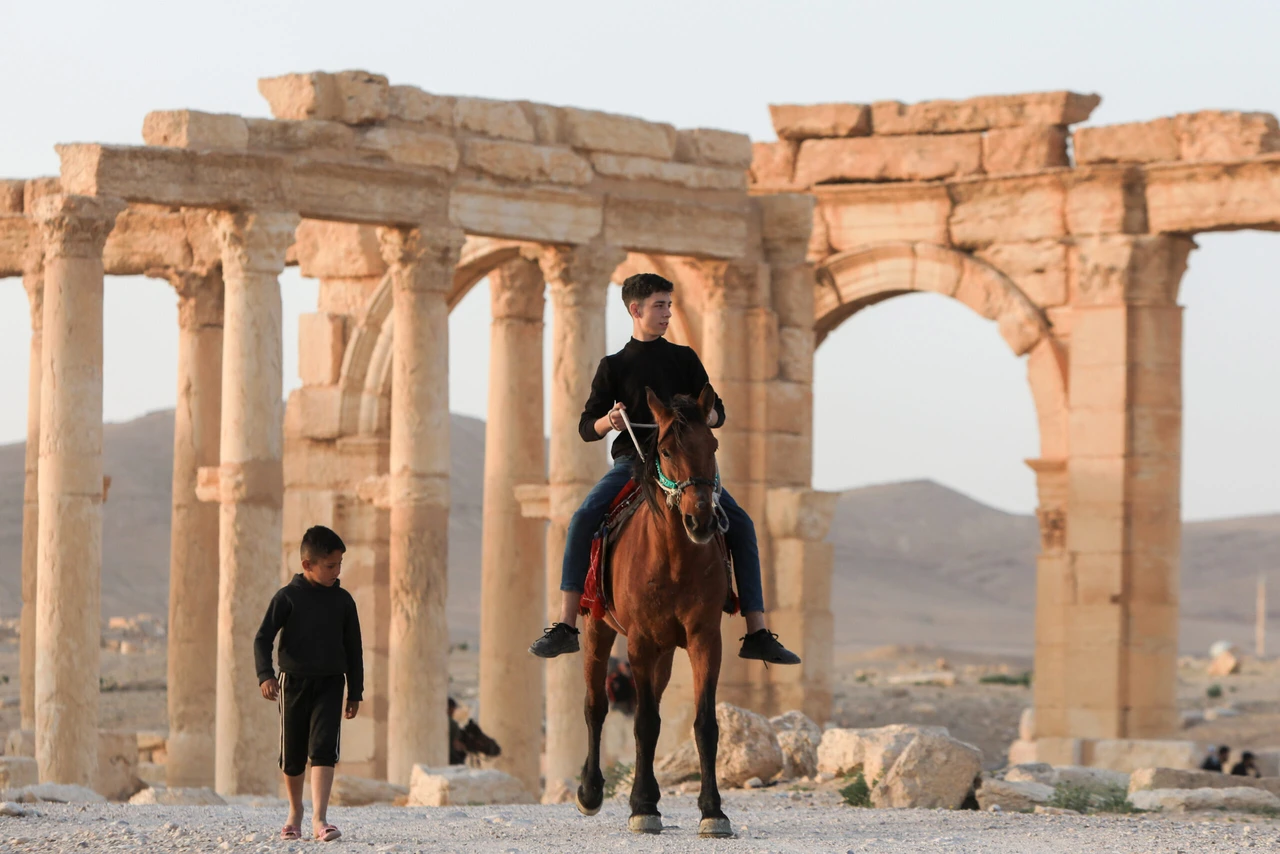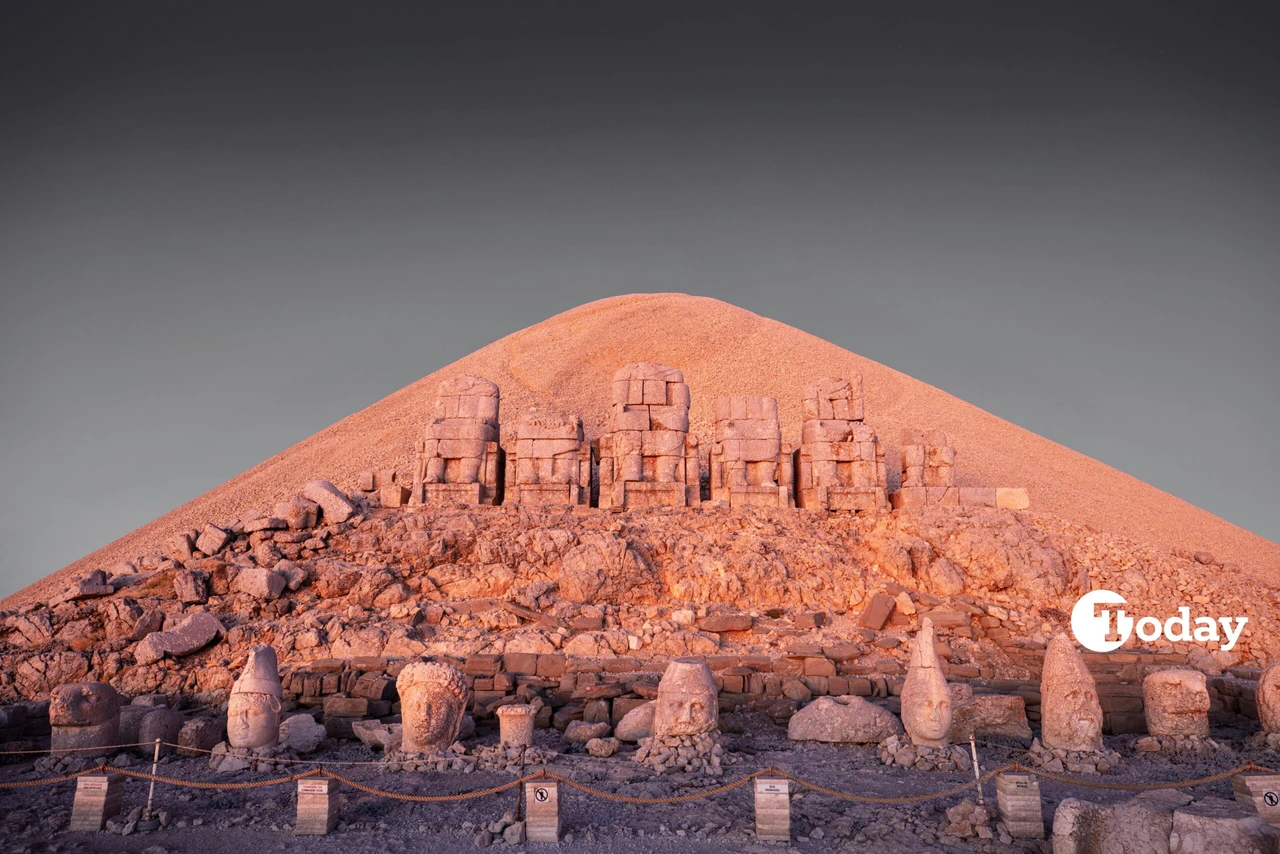Palmyra’s collapse: How war and propaganda destroyed a civilization
 Syrians, including children, spend time among the ruins of the Palmyra, an ancient city, which was listed as a World Heritage Site by UNESCO in 1980 and destroyed by the terrorist organization Daesh in 2015, are seen in Homs Governorate, Syria, April 4, 2025. (AA Photo)
Syrians, including children, spend time among the ruins of the Palmyra, an ancient city, which was listed as a World Heritage Site by UNESCO in 1980 and destroyed by the terrorist organization Daesh in 2015, are seen in Homs Governorate, Syria, April 4, 2025. (AA Photo)
The ancient city of Palmyra in Syria’s Homs province, once hailed as a jewel of world heritage, now stands as a haunting testament to the cost of war and political exploitation. A UNESCO World Heritage site since 1980, Palmyra was one of the country’s most important tourist destinations until the outbreak of the Syrian civil war in 2011.
Today, visitors return to the site with heavy hearts. The city has suffered repeated waves of devastation—from Daesh militants to regime bombings—leaving behind ruins of ruins and hopes for restoration.

Terrorism, looting and systematic destruction
In 2015, Daesh terrorist group captured Palmyra and unleashed a campaign of cultural obliteration. The group detonated explosives at the world-renowned Temple of Bel, the Temple of Baalshamin, the iconic Arch of Triumph, and several royal tombs. They also executed Khaled al-Asaad, a respected archaeologist who had dedicated his life to protecting the ancient city.
The destruction was globally condemned. In an interview with the Anadolu Agency (AA), former UNESCO Director-General Irina Bokova called the attacks a “war crime” and a “huge loss for the Syrian people and for all humanity.”

Regime airstrikes deepen the damage
Political scientist and Middle East expert Haian Dukhan, who was born in Palmyra, told Türkiye Today that the Assad regime long exploited Syria’s cultural heritage as a tool for national identity and international prestige. But this façade collapsed during the civil war.
“Sites like Palmyra were showcased as symbols of Syria’s history, yet the regime failed to preserve them,” Dukhan explained. “Instead, archaeological landmarks were dragged into political and military agendas.”
He argued that the regime weaponised heritage sites—both as propaganda tools and as targets of neglect. “The regime often used their destruction to attract international sympathy, casting itself as the sole protector of Syrian identity.”

After Daesh, chaos continued
According to Zehir Selim, a member of Palmyra’s Civil Committee and a key figure in local rebuilding efforts, the nine-month occupation by Daesh devastated the city’s cultural fabric. But the damage didn’t end there.
“After Daesh withdrew, regime and Russian airstrikes inflicted even more destruction,” Selim told AA. “Then the city was looted—homes, shops, marketplaces, museum artifacts, even underground tombs were raided. Unregulated excavations were carried out.”
Selim added that during Daesh’s second occupation, further demolitions targeted the Arch of Triumph, the Roman Theatre, and both the Bel and Baalshamin temples—symbols of Palmyra’s global significance.

Ghost town with no basic services
While some local tourists have begun visiting the ruins after 14 years, the road to recovery remains long and difficult. Essential infrastructure is nearly non-existent.
“Only 4 of 84 electrical transformers are still functioning,” Selim noted. “Electricity, water and sewage systems are critically deficient. Military trenches left by the regime further prevent safe resettlement.”
Though there have been minor advancements in education, health care remains in crisis. “There’s a severe shortage of medical equipment and trained doctors. Basic health services are virtually inaccessible,” he said.

Despite devastation, locals hope Palmyra will one day reclaim its past glory
Palmyra’s ancient monuments once stood as monuments to human achievement, connecting East and West through architecture, trade, and culture. Today, they stand as tragic reminders of war, extremism, and failed governance.
Still, the people of Syria—those who once lived among these ruins—dream of a day when Palmyra will rise again, not just in stone, but in spirit.



